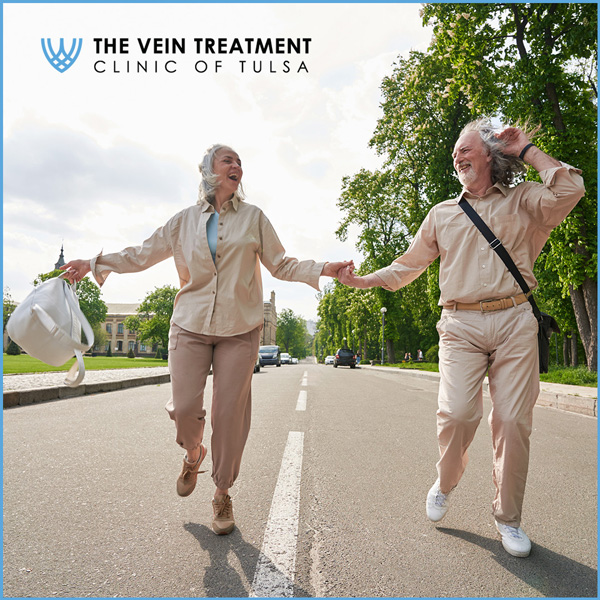You might have a lot of questions about what vein treatment even looks like. Let’s talk through some frequently asked questions so you know what to expect.
What are the symptoms of vein disease?
You might be experiencing aching or heaviness in your legs, enlarged, swollen or knotted clusters of purple veins, edema, itching skin above infected veins, skin discoloration, ulcers on the inner aspect of the ankles, distention of superficial veins, or generalized swelling, warmth, or redness in the affected area.
What are the causes of Varicose Veins?
Risk factors include family history, lack of exercise, smoking, prolonged sitting or standing and more. Venous reflux is a condition that can lead to valves not closing, allowing blood to drain and pool. If left untreated, venous reflux can develop into chronic venous insufficiency (CVI). Healthy leg veins have valves that keep blood flowing to the heart. Venous reflux disease develops when the valves stop working properly and allow blood to flow backward (I.e., reflux) and pool in the lower leg veins. If venous reflux disease is left untreated, symptoms can worsen over time.
How Does the Vein Treatment Clinic of Tulsa Treat Diseased Veins with VenaSeal?
The goal of our treatment is to reduce or stop the backward flow of blood. At The Vein Treatment Clinic of Tulsa, our powerful VenaSeal treatment will close off the diseased vein by delivering medical adhesive that permanently seals the vein, routing blood flow through healthier veins. The system delivers a small amount of a specially formulated medical adhesive to the diseased vein. The adhesive permanently seals the vein and blood is rerouted through nearby healthy veins. Our safe and effective treatment will provide a drastic improvement in your quality of life.
When will my symptoms improve?
Symptoms are caused by the diseased superficial vein and may improve as soon as the diseased vein is closed.
How fast can I return to normal activity after the procedure?
The VenaSeal procedure is designed to reduce recovery time. Many patients return to normal activity immediately after the procedure. Your doctor can help you determine when you can return to normal activity.
Is the VenaSeal procedure painful?
No! Most patients feel very little, if any, pain during this outpatient procedure.
Is there bruising after the procedure?
The good news is, no, most patients report little-to-no-bruising!
What happens to the VenaSeal adhesive?
Only a very small amount of VenaSeal adhesive is used to close the vein. Your body will naturally create scar tissue around the adhesive over time to keep the vessel permanently closed.
How does the VenaSeal procedure differ from thermal energy procedures?
The VenaSeal procedure uses an adhesive to close the superficial vein. Thermal energy procedures use heat to close the vein. The intense heat requires a large volume of numbing medicine, which is injected through many needle sticks. The injections may cause pain and bruising after the procedure. VenaSeal, overall, is a less invasive procedure that gives great results.
Book an appointment today to treat those pesky varicose and spider veins. You don’t have to live with them any longer!



